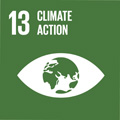- Docente: Vanessa Assumma
- Credits: 4
- SSD: ICAR/22
- Language: English
- Teaching Mode: Traditional lectures
- Campus: Bologna
- Corso: Second cycle degree programme (LM) in Building Engineering -Architecture (cod. 5697)
-
from Sep 19, 2024 to Dec 19, 2024
Learning outcomes
At the end of the course the student will be able to define the use of economic resources needed for the realization of the project choices.
Course contents
The course focuses on theoretical and practical tools and methods to manage decisional problems in the built environment. Evaluation methods used to support decision-making are explained and tested in workshops. Finally, the course focuses on economic and financial evaluation needed for the evaluation of alternative transformation scenarios and the implementation of the most suitable project choices.
The program of the course is articulated according to the following three macro-themes:
- Traditional and innovative paradigms in the built environment and its evaluation (i.e., Sustainable Development, SDGs, Resilience, Circular economy and Circular City, Urban mining);
- Decision making in complex systems and evaluation methods (i.e., PCM, stakeholder analysis, SWOT analysis, scenario building, multi-criteria evaluations, indicators);
- Economic evaluation methods and tools (i.e., cost-benefit analysis, discounted cash flow analysis and bills of quantities, economic and financial feasibility).
Readings/Bibliography
The lectures will be supported by slides with all the relevant information for the students. A preliminary list of reading material is the following (additional relevant documents and links will be provided)
- Brandon P.S., Lombardi P. (2005) Evaluating Sustainable Development in the Built Environment, 2nd Edition 2011, pp. 272. Wiley-Blackwell, Hoboken.
- Dente B. (2013). Understanding Policy decisions. Springer, Cham.
- Fregonara E. (2017). Evaluation, sustainability, project. Life Cycle Thinking and international orientations. Franco Angeli, Milano (English version: e_book available on-line
- IVSC (2022). International Valuation Standards. Page Bros, Norwich (e-book available on-line)
- TEGOVA (2020). European Valuation Standards 2020 (e-book available online)
- Godet, M. (2000). The Art of Scenarios and Strategic Planning:Tools and Pitfalls. Technological Forecasting and Social Change 65, 3–22.
- Campbell, H., Brown, R. (2003). Benefit–Cost Analysis: Financial and Economic Appraisal Using Spreadsheets. Cambridge University Press. ISBN 978-0-521-82146-9.
Teaching methods
The course will alternate theoretical lessons from the teacher and practical sessions. Practical workshop will be held to make better understand of the presented methods and approaches. Students will work in group to fulfil the final assignment. Work group, interactive discussions, and student presentation will be implemented during the practical sessions.
Assessment methods
The final examination consists of two parts:
- Oral test - the students are asked to answer the questions related to all the topics discussed and analysed during the course. The oral exam constitutes 50% of the final vote.
- Portfolio – The students are asked to prepare a group portfolio including all the workshops outputs which are held during the course. The assignments are mandatory and constitute 50% of the final vote.
The assessment is expressed in 30/30 marks.
Teaching tools
Students are asked to bring their own laptop to class to access online material and conduct workshops
Office hours
See the website of Vanessa Assumma
SDGs




This teaching activity contributes to the achievement of the Sustainable Development Goals of the UN 2030 Agenda.
